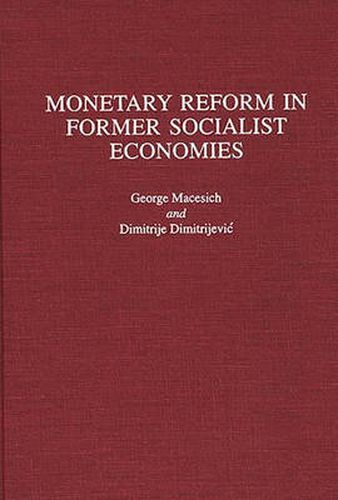Readings Newsletter
Become a Readings Member to make your shopping experience even easier.
Sign in or sign up for free!
You’re not far away from qualifying for FREE standard shipping within Australia
You’ve qualified for FREE standard shipping within Australia
The cart is loading…






Radical change seems to be the only panacea for inefficient economies. This work takes a look at the financial system and its function in socialist central planning economies. It provides an explanation of the partial reforms in socialist economies from the 1950s to 1988. With Yugoslavia as the example, the work discusses financial and monetary reforms and adjustments in socialist economies. An explanation of monetary reform includes the changes in the role of financial intermediation and monetary policy goals, target and instruments, and methodological questions. General conclusions about recent monetary reforms in socialist economies completes the discussion. Scholars, students, and those interested in comparative, developmental, international, and historical economics will find this a valuable resource and interesting reading. It is an especially useful book at the graduate and seminar level.
$9.00 standard shipping within Australia
FREE standard shipping within Australia for orders over $100.00
Express & International shipping calculated at checkout
Radical change seems to be the only panacea for inefficient economies. This work takes a look at the financial system and its function in socialist central planning economies. It provides an explanation of the partial reforms in socialist economies from the 1950s to 1988. With Yugoslavia as the example, the work discusses financial and monetary reforms and adjustments in socialist economies. An explanation of monetary reform includes the changes in the role of financial intermediation and monetary policy goals, target and instruments, and methodological questions. General conclusions about recent monetary reforms in socialist economies completes the discussion. Scholars, students, and those interested in comparative, developmental, international, and historical economics will find this a valuable resource and interesting reading. It is an especially useful book at the graduate and seminar level.